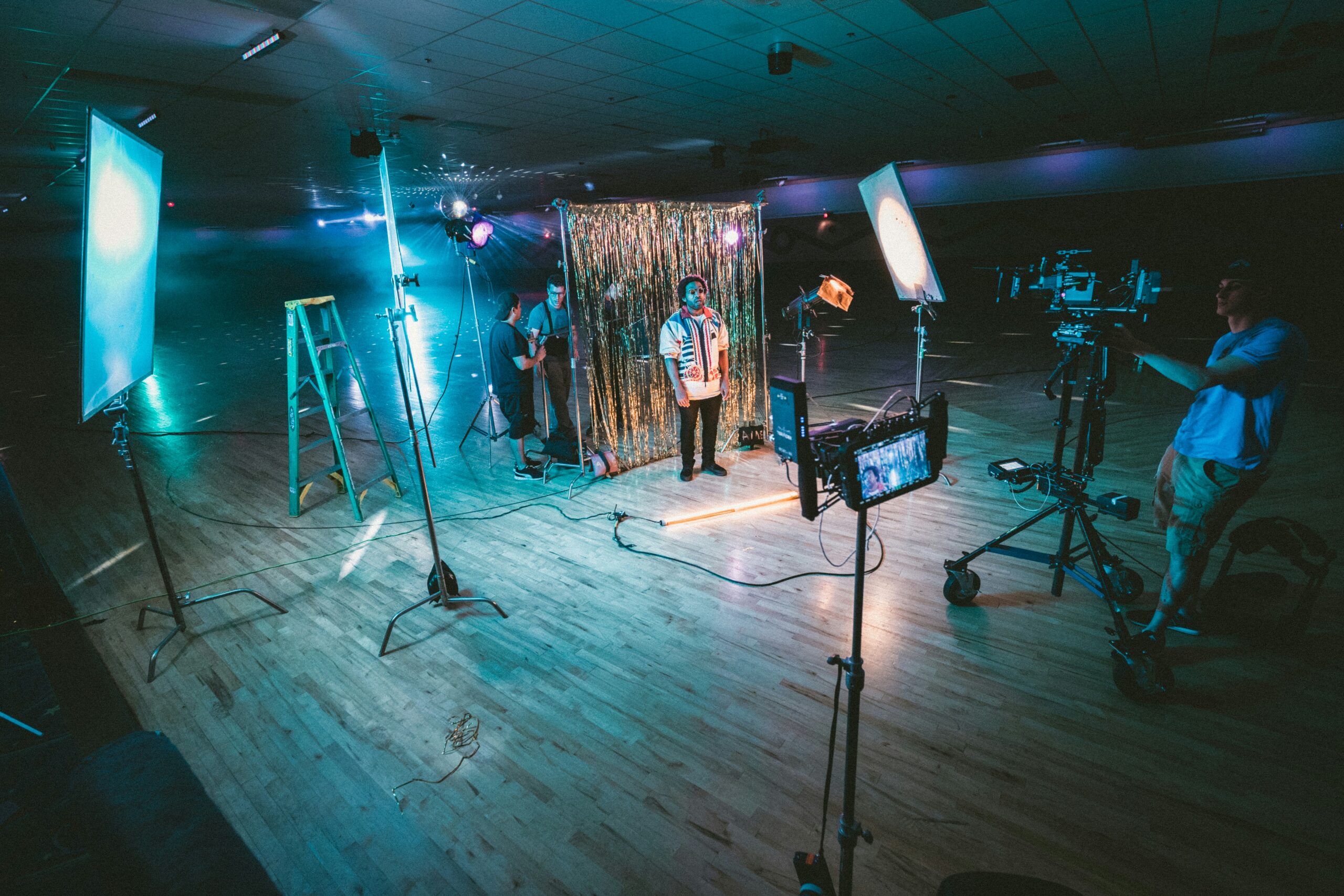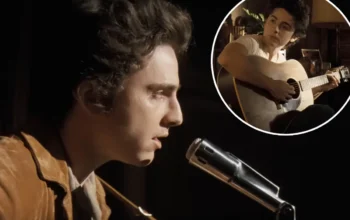“`html
Introduction to ‘Rebel Moon’ and its Significance
Zack Snyder’s ‘Rebel Moon,’ the latest addition to his illustrious filmography, has captivated audiences with its sprawling narrative and distinctive visual style. Initially conceived as a potential ‘Star Wars’ project, ‘Rebel Moon’ evolved into an independent science fiction epic, unshackling itself from existing franchises to offer a fresh, audacious universe. This film not only underscores Snyder’s creative prowess but also emphasizes his ability to craft gripping, expansive worlds that draw viewers into the core of his storytelling.
The anticipation surrounding ‘Rebel Moon’ was palpable even before its official release, with fans eagerly awaiting another Snyder masterpiece. Known for his directorial works such as ‘300’ and the ‘Justice League’ Snyder Cut, his distinct approach to filmmaking has garnered a loyal following. The promise of a director’s cut for ‘Rebel Moon’ further amplified excitement, as audiences were keen to delve deeper into Snyder’s original vision, unencumbered by the constraints often imposed by theatrical releases.
The director’s cut, in particular, holds significant importance. It symbolizes artistic freedom and offers a lens into Snyder’s unfiltered narrative intentions. With extended scenes, more intricate character development, and enriched world-building, the director’s cut transforms the viewing experience, providing a more comprehensive understanding of Snyder’s creative ambitions. This version has been primarily lauded for its depth and complexity, attributes that were somewhat diluted in the film’s initial release due to necessary runtime limitations.
The reception of ‘Rebel Moon’ has been notably positive, with critics and audiences alike praising its ambitious scope and visual grandeur. The director’s cut has been especially well-received, often regarded as a definitive version that enhances the film’s storytelling and thematic resonance. This version allows Snyder to fully showcase his narrative ideology, making ‘Rebel Moon’ not just a movie, but a testament to his unyielding dedication to craft and vision in the realm of cinema.
Plot and Narrative: A Closer Look
The essence of ‘Rebel Moon: Part 1’ revolves around a seemingly tranquil lunar colony thrust into turmoil when an authoritarian regime extends its grip across the universe. The protagonist, Kora, portrayed compellingly by Sofia Boutella, embarks on a quest to rally a ragtag group of warriors to fend off the impending invasion. Her journey is not only one of survival but also of self-discovery and rebellion against overarching tyranny.
In the director’s cut, Zack Snyder has woven additional layers into the narrative, presenting a more nuanced and enriched storyline. Several pivotal scenes, which were truncated or altogether missing from the theatrical release, find their rightful place here. These extended sequences allow for a fuller exploration of the characters’ backstories, motivations, and relationships. For instance, an extended flashback sequence delves deeper into Kora’s troubled past, giving viewers greater insight into her motivations and the burdens she carries.
Moreover, the inclusion of a protracted dialogue-driven scene between the antagonist, General Rahm (played by Djimon Hounsou), and his inner council sheds light on the complexities of the oppressive regime, providing a multi-dimensional view of the enemy. This added scene not only enhances the plot’s depth but also underscores the moral ambiguities and power struggles within the antagonist’s ranks.
The director’s cut also revisits several action sequences, amplifying their intensity and emotional impact. A particularly notable enhancement is the extended battle sequence on the lunar surface, which now features intricate choreography and a broader tactical overview of the conflict. This addition highlights the scale and stakes of the rebellion, intensifying viewers’ investment in the colony’s plight.
Ultimately, Snyder’s vision for ‘Rebel Moon: Part 1’ is vividly realized in this director’s cut, transforming what was already a compelling narrative into a richly textured epic. These newly added scenes and extended sequences contribute significantly to a deeper understanding and appreciation of the story, character arcs, and underlying themes of defiance and resilience.
Character Development and Performances
The director’s cut of Zack Snyder’s ‘Rebel Moon’ offers a more expansive and nuanced exploration of its main characters. This extended version provides a deeper dive into their backstories and motivations, allowing the audience to connect with them on a more profound level. The additional footage proves instrumental in fleshing out the characters’ arcs, lending greater emotional weight and complexity to their journeys.
Leading the charge is Sofia Boutella, who delivers an outstanding performance as Kora, the film’s protagonist. The extra scenes in the director’s cut shed light on Kora’s internal conflicts and struggles, which elevate her character from a simple warrior archetype to a richly textured individual brimming with resilience and vulnerability.
Equally impressive is Djimon Hounsou, whose portrayal of General Titus gains more depth with the added content. The director’s cut elaborates on his past, providing context for his stern demeanor and unyielding principles. Hounsou’s nuanced performance, coupled with the expanded narrative, transforms Titus from an imposing figure into one whose sense of duty and personal sacrifices resonate deeply with viewers.
Charlie Hunnam as rebellious pilot Gunner offers another memorable turn. The new material includes flashbacks that delve into his troubled past, enhancing the layers of his mercurial persona. Hunnam skillfully captures Gunner’s blend of charm and rogueish unpredictability, turning what could have been a one-dimensional character into someone eminently watchable and relatable.
The supporting cast also benefits from the additional footage. Ray Fisher as the enigmatic Bloodaxe and Cary Elwes as the regal Governor Goneril enjoy richer character arcs, each given more screen time to display their acting prowess and enrich the story’s intricate web of relationships.
In summary, the director’s cut of ‘Rebel Moon’ significantly bolsters character development, allowing the actors to deliver more compelling and intricate performances. These enhancements not only contribute to the film’s overall emotional impact but also ensure that the characters leave a lasting impression long after the credits roll.
Zack Snyder’s ‘Rebel Moon’ Director’s Cut showcases a remarkable evolution in visual storytelling, making it a spectacle to behold. The film’s cinematography is a testament to Snyder’s unique vision, blending wide shots with meticulous close-ups that capture both the grandeur and the intimate moments. Each frame is meticulously composed, offering a visually rich tapestry that aids in immersing the audience in the world of ‘Rebel Moon’. The diverse and expansive landscapes are beautifully shot, creating a sense of scale and wonder that is truly captivating.
When it comes to visual effects, the Director’s Cut elevates the experience with enhanced CGI elements that contribute significantly to the film’s sci-fi aesthetic. The intricate detail in spacecraft designs, alien creatures, and otherworldly environments are more pronounced, making these elements feel more tangible and immersive. The improved special effects sequences, particularly during action scenes and space battles, add a layer of excitement and intensity that was somewhat subdued in the original release.
The production design of ‘Rebel Moon’ is equally noteworthy. The attention to detail in set designs, costumes, and props is evident and adds a depth of authenticity to the film’s universe. The blend of futuristic technology with a dystopian backdrop creates a visually engaging contrast that enhances the storytelling. The additional visual sequences introduced in the Director’s Cut provide further context and depth to the narrative, ensuring that every visual element serves a purpose in the unfolding drama.
Overall, the enhancements in the Director’s Cut of ‘Rebel Moon’ significantly impact the film’s aesthetic and overall viewing experience. The combination of expert cinematography, advanced visual effects, and detailed production design culminates in a visual feast that enriches the narrative and captivates the audience. These changes underscore the importance of visual elements in storytelling, demonstrating how they can transform a film into an unforgettable cinematic journey.
Soundtrack and Audio Elements
The musical score and sound design of “Rebel Moon” play an instrumental role in enriching its visual storytelling. The soundtrack, composed by Tom Holkenborg (commonly known as Junkie XL), brings a unique blend of orchestral and electronic elements that seamlessly integrate with the film’s atmosphere. Notably, the director’s cut introduces several new musical pieces that enhance pivotal scenes, adding layers of emotion and intensity. For example, during a climactic battle sequence, a previously unreleased track employs heavy percussion and sweeping strings, which amplifies the tension and grandeur of the scene.
The sound design is meticulously crafted, with each audio element serving to immerse the audience deeper into the narrative. From the subtle rustling of leaves in quiet, introspective moments to the thunderous explosions during action-packed sequences, the attention to sonic detail is evident. The director’s cut also incorporates new sound effects that heighten the realism of the film’s universe. For instance, the otherworldly hums of alien technology are more pronounced, lending an added layer of authenticity to the sci-fi setting.
One of the standout audio elements is the use of diegetic and non-diegetic sounds, which are effectively balanced throughout the film. Diegetic sounds like character dialogues and environmental noise anchor the audience in the scene, while non-diegetic musical scores elevate the emotional weight of specific moments. This duality in soundscapes ensures that the viewer remains engaged both visually and aurally.
In addition to contributing to the film’s narrative, the audio elements significantly impact its overall mood and tone. The carefully curated soundtrack aids in transitions between scenes, shifting from moments of serene contemplation to high-octane action smoothly. Moreover, the enhanced sound design in the director’s cut accentuates the film’s epic scale and dramatic arcs, ensuring that the auditory experience is as compelling as the visual spectacle.
The thematic tapestry of Zack Snyder’s ‘Rebel Moon’ is rich and multifaceted, offering a compelling meditation on power, rebellion, and the human spirit. Central to the narrative is the struggle against tyranny—a classic yet perpetually relevant theme. The director’s cut of ‘Rebel Moon’ nuances this theme further by providing additional backstory and character development that magnify the stakes and underscore the oppressive forces at play. By delving into these facets, the audience gains a deeper understanding of the motivations driving the rebellion, making the struggle feel more visceral and immediate.
Another prominent theme is that of sacrifice. Throughout ‘Rebel Moon’, characters are frequently faced with choices that require personal loss for the greater good. This theme is mirrored in the broader context of the galactic conflict, where individual acts of bravery and selflessness contribute to a larger movement. The director’s cut elaborates on these moments, offering extended scenes that highlight the personal costs of war and resistance. The portrayal of sacrifice is not glorified but presented as a necessary, though painful, component of the fight for freedom.
Symbolism is also intricately woven into the fabric of ‘Rebel Moon’, adding layers of meaning that enrich the story. The moon itself serves as a potent symbol, representing not just a celestial body, but also a beacon of hope and defiance against the encroaching darkness of tyranny. Additionally, recurring visual motifs—such as the shattered chains of the enslaved or the resilient growth of a lone flower in a desolate landscape—articulate themes of liberation and resilience. These symbols are more pronounced in the director’s cut, where extended sequences allow for a fuller exploration and appreciation of their significance.
This deeper dive into thematic and symbolic elements in the director’s cut of ‘Rebel Moon’ ultimately enhances the narrative complexity, enriching the viewer’s experience and inviting more profound reflections on power dynamics, the cost of resistance, and the indomitable nature of hope.
The director’s cut of Zack Snyder’s ‘Rebel Moon’ offers a comprehensive reimagining of the original release, providing audiences with an extended, richer version of the sci-fi epic. One of the most significant differences lies in the storyline’s depth. While the original release presented a straightforward narrative, the director’s cut delves deeper into the lore of the ‘Rebel Moon’ universe. Additional scenes and extended sequences uncover the intricate politics and history of this dystopian world, which were only hinted at in the original.
Character development is another area where the director’s cut shines. Several characters who appeared minor in the original version receive more screen time, allowing their backstories and motivations to be explored in greater detail. This added dimension offers a more complex portrayal of the protagonists and antagonists alike, making their actions and decisions more understandable and impactful.
Pacing is dramatically altered in the director’s cut, with the film adopting a more measured, deliberate tempo. This change facilitates a greater buildup of tension and a more gradual unfolding of the plot, contrasting with the faster-paced original release, which some critics felt rushed certain key moments. The director’s cut allows for a more organic progression of the narrative, enhancing the overall storytelling experience.
Regarding fan and critical reactions, opinions are varied. Many fans appreciate the depth and expanded content of the director’s cut, feeling it provides a more satisfying and immersive experience. Critics, too, have noted the improved character arcs and narrative complexity, often highlighting the director’s cut as a superior version. However, some viewers miss the brisk pacing of the original, favoring a more condensed storytelling approach.
Overall, the director’s cut of ‘Rebel Moon’ offers a more elaborate and fulfilling view of Snyder’s vision, adding layers of intricacy to the narrative and characters. While both versions have their merits, the extended cut is generally preferred by those who wish for a deeper and more nuanced exploration of the ‘Rebel Moon’ universe.
Final Thoughts and Recommendations
‘Rebel Moon: Part 1’ illustrates Zack Snyder’s commitment to delivering a cinematic experience that extends beyond standard storytelling. The director’s cut, running notably longer than the theatrical release, offers a richer and more intricate exploration of the film’s universe. The expanded scenes and additional character development enrich the narrative, giving audiences a deeper understanding of the motivations and backstories that drive the plot. This extended version undoubtedly enhances the original film, providing a more immersive and nuanced experience.
The director’s cut showcases Snyder’s trademark visual style with its striking cinematography and meticulous attention to detail. However, this extended cut is not without its drawbacks. The added runtime may feel daunting for some viewers, and certain scenes, while beautifully shot, could be perceived as slowing the overall pacing. Despite these minor criticisms, the elaborative storytelling effectively punctuates the film’s themes and adds substantial value for those seeking a more comprehensive depiction of the director’s vision.
For viewers entirely new to ‘Rebel Moon,’ starting with the director’s cut is strongly recommended. This version provides a fully fleshed-out narrative, making it easier to grasp the complexities of the storyline and characters from the outset. Moreover, fans of Zack Snyder are likely to appreciate the additional content and the signature stylistic elements that the director is known for, which are more pronounced in this version.
In summary, the ‘Rebel Moon: Part 1’ director’s cut stands out as a compelling enhancement of the original film, aiming to enthrall both seasoned fans and new viewers alike. Its expanded narrative and detailed world-building offer a compelling reason to revisit the film. As long as audiences are prepared for the extended duration, they can look forward to a richer and more immersive viewing experience that stays true to Snyder’s creative genius.



